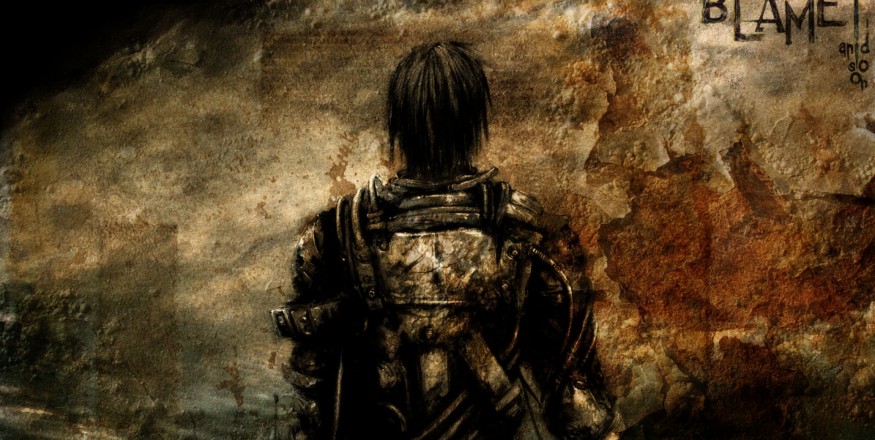The Lesser Key of Solomon, also known as Clavicula Salomonis Regis or Lemegeton, is an anonymous grimoire (or spell book) on demonology. It was compiled in the mid-17th century, mostly from materials a couple of centuries older. It is divided into five books—the Ars Goetia, Ars Theurgia-Goetia, Ars Paulina, Ars Almadel, and Ars Notoria.1119Please respect copyright.PENANAh1vZSMYwp0
Ars Goetia1119Please respect copyright.PENANA9QhLjVuE4b
The most obvious source for the Ars Goetia is Johann Weyer's Pseudomonarchia Daemonum in his De praestigiis daemonum. Weyer does not cite, and is unaware of, any other books in the Lemegeton, indicating that the Lemegeton was derived from his work, not the other way around. The order of the spirits was changed between the two, four additional spirits were added to the later work, and one spirit (Pruflas) was omitted. The omission of Pruflas, a mistake that also occurs in an edition of Pseudomonarchia Daemonum cited in Reginald Scot's The Discoverie of Witchcraft, indicates that the Ars Goetia could not have been compiled before 1570. Indeed, it appears that the Ars Goetia is more dependent upon Scot's translation of Weyer than Weyer's work in itself. Additionally, some material was used from Heinrich Cornelius Agrippa's Three Books of Occult Philosophy, the Heptameron by pseudo-Pietro d'Abano, and the Magical Calendar.
Weyer's Officium Spirituum, which is likely related to a 1583 manuscript titled The Office of Spirits, appears to have ultimately been an elaboration on a 15th-century manuscript titled Le Livre des Esperitz (of which 30 of its 47 spirits are nearly identical to spirits in the Ars Goetia).
In a slightly later copy made by Thomas Rudd, this portion was labelled "Liber Malorum Spirituum seu Goetia", and the seals and demons were paired with those of the 72 angels of the Shemhamphorasch, who were intended to protect the conjurer and control the demons he summoned. The angelic names and seals were derived from a manuscript by Blaise de Vigenère, whose papers were also used by Samuel Liddell MacGregor Mathers in his works for the Hermetic Order of the Golden Dawn. Rudd may have derived his copy of Liber Malorum Spirituum from a now-lost work by Johannes Trithemius, who taught Agrippa, who in turn taught Weyer.
This portion of the work was later translated by S. L. MacGregor Mathers and published by Aleister Crowley under the title The Book of the Goetia of Solomon the King. Crowley added some additional invocations previously unrelated to the original work, as well as essays describing the rituals as psychological exploration instead of demon summoning.1119Please respect copyright.PENANA2t5EPqcx0L
The Seventy-Two Demons
The demons' names (given below) are taken from the Ars Goetia, which differs in terms of number and ranking from the Pseudomonarchia Daemonum of Weyer. As a result of multiple translations, there are multiple spellings for some of the names, which are given in the articles concerning them.
1) King Bael1119Please respect copyright.PENANALitHte0WZW
2) Duke Agares1119Please respect copyright.PENANAICKXo8ojcX
3) Prince Vassago1119Please respect copyright.PENANAGsl2dWpXJz
4) Marquis Samigina1119Please respect copyright.PENANA5Mi5En09N4
5) President Marbas1119Please respect copyright.PENANA1NOo3dDq2H
6) Duke Valefor1119Please respect copyright.PENANAIIbpKLxYE8
7) Marquis Amon1119Please respect copyright.PENANAuAAzf7vtmQ
8) Duke Barbatos1119Please respect copyright.PENANA9GNNPqX978
9) King Paimon1119Please respect copyright.PENANA9llvFGkR7n
10) President Buer1119Please respect copyright.PENANA6makvfAGhs
11) Duke Gusion1119Please respect copyright.PENANArOERC3pgI7
12) Prince Sitri1119Please respect copyright.PENANA9YjG3uR2AZ
13) King Beleth1119Please respect copyright.PENANA4FlotmaFCg
14) Marquis Leraje1119Please respect copyright.PENANAzGg15M8itQ
15) Duke Eligos1119Please respect copyright.PENANAwpL3mVoUJK
16) Duke Zepar1119Please respect copyright.PENANAHXuWGOeUqz
17) Count/President Botis1119Please respect copyright.PENANA00O5HgFTIN
18) Duke Bathin1119Please respect copyright.PENANAK0UbGkY4K0
19) Duke Sallos1119Please respect copyright.PENANA1T12SU9l4q
20) King Purson1119Please respect copyright.PENANANy9tdbVT9n
21) Count/President Marax1119Please respect copyright.PENANASsnGUcN8la
22) Count/Prince Ipos1119Please respect copyright.PENANANLr7i0huCK
23) Duke Aim1119Please respect copyright.PENANAwE2Q9RVjHW
24) Marquis Naberius1119Please respect copyright.PENANAQHwHLEO1qg
25) Count/President Glasya-Labolas1119Please respect copyright.PENANA93s0CRZuQe
26) Duke Buné1119Please respect copyright.PENANAc8MeDKdrXM
27) Marquis/Count Ronové1119Please respect copyright.PENANAguU7NgW6rP
28) Duke Berith1119Please respect copyright.PENANAnc3CIlXxvE
29) Duke Astaroth1119Please respect copyright.PENANAx15TpqZEZe
30) Marquis Forneus1119Please respect copyright.PENANAJgUOrbdB13
31) President Foras1119Please respect copyright.PENANAzeXquAIPnW
32) King Asmoday1119Please respect copyright.PENANAqeoEZju8x5
33) Prince/President Gäap1119Please respect copyright.PENANA4uYoXHM2VW
34) Count Furfur1119Please respect copyright.PENANAw53QTcNitM
35) Marquis Marchosias1119Please respect copyright.PENANAkZ2owzpJZe
36) Prince Stolas1119Please respect copyright.PENANApgiZSoE102
37) Marquis Phenex1119Please respect copyright.PENANAnZkpAxBb7c
38) Count Halphas1119Please respect copyright.PENANAntjiBKvJb6
39) President Malphas1119Please respect copyright.PENANAuQnTkGK7xT
40) Count Räum1119Please respect copyright.PENANAHrOtLb4MSq
41) Duke Focalor1119Please respect copyright.PENANABSnzLfNOEb
42) Duke Vepar1119Please respect copyright.PENANAgqZsWCVMLD
43) Marquis Sabnock1119Please respect copyright.PENANA8uCu4o2ES3
44) Marquis Shax1119Please respect copyright.PENANA84QsG6xcZm
45) King/Count Viné1119Please respect copyright.PENANAPjzrIkbi0J
46) Count Bifrons1119Please respect copyright.PENANAt7muibg0IO
47) Duke Vual1119Please respect copyright.PENANAsCxd1S6RVM
48) President Haagenti1119Please respect copyright.PENANAYtAcPV0yIR
49) Duke Crocell1119Please respect copyright.PENANAl47QWs3GQK
50) Knight Furcas1119Please respect copyright.PENANAqlS822osez
51) King Balam1119Please respect copyright.PENANAlFSrCwU0D8
52) Duke Alloces1119Please respect copyright.PENANALdqsQcBDr5
53) President Caim1119Please respect copyright.PENANAx6DCERqkKS
54) Duke/Count Murmur1119Please respect copyright.PENANAvkcYtlMJSn
55) Prince Orobas1119Please respect copyright.PENANAoYQJhw0r2Y
56) Duke Gremory1119Please respect copyright.PENANAlFiQGMH9p6
57) President Ose1119Please respect copyright.PENANAJeBgF0uxNQ
58) President Amy1119Please respect copyright.PENANAJcEWY0xP4O
59) Marquis Orias1119Please respect copyright.PENANA2F9bBhbvDD
60) Duke Vapula1119Please respect copyright.PENANAmjscy55TtL
61) King/President Zagan1119Please respect copyright.PENANA8YZPSPm24Z
62) President Valac1119Please respect copyright.PENANANei6YOd0i3
63) Marquis Andras1119Please respect copyright.PENANAEffDhpbaVX
64) Duke Flauros1119Please respect copyright.PENANAHSZ7PWkbfr
65) Marquis Andrealphus1119Please respect copyright.PENANAbRC0bR55cx
66) Marquis Kimaris1119Please respect copyright.PENANA69V1RVyGao
67) Duke Amdusias1119Please respect copyright.PENANAhe3kqmVION
68) King Belial1119Please respect copyright.PENANAiJAxsslibZ
69) Marquis Decarabia1119Please respect copyright.PENANAtJgXf85rK3
70) Prince Seere1119Please respect copyright.PENANAw3loorC2CP
71) Duke Dantalion1119Please respect copyright.PENANArGKwS4bNas
72) Count Andromalius
The demons are described as being commanded by four kings of the cardinal directions: Amaymon (East), Corson (West), Ziminiar (North), and Gaap (South). A footnote in one variant edition instead lists them as Oriens or Uriens, Paymon or Paymonia, Ariton or Egyn, and Amaymon or Amaimon, alternatively known as Samael, Azazel, Azael, and Mahazael (purportedly their preferred rabbinic names).[10] Agrippa's Occult Philosophy lists the kings of the cardinal directions as Urieus (East), Amaymon (South), Paymon (West), and Egin (North); again providing the alternate names Samuel (i.e. Samael), Azazel, Azael, and Mahazuel. The Magical Calendar lists them as Bael, Moymon, Poymon, and Egin, though Peterson notes that some variant editions instead list '"Asmodel in the East, Amaymon in the South, Paymon in the West, and Aegym in the North"; "Oriens, Paymon, Egyn, and Amaymon"; or "Amodeo [sic] (king of the East), Paymon (king of the West), Egion (king of the North), and Maimon."1119Please respect copyright.PENANAJTk9RXzbz4
Ars Theurgia Goetia1119Please respect copyright.PENANABIeZknuAdB
The Ars Theurgia Goetia mostly derives from Trithemius's Steganographia, though the seals and order for the spirits are different due to corrupted transmission via manuscript. Rituals not found in Steganographia were added, in some ways conflicting with similar rituals found in the Ars Goetia and Ars Paulina. Most of the spirits summoned are tied to points on a compass, four Emperors tied to the cardinal points (Carnesiel in the East, Amenadiel in the West, Demoriel in the North and Caspiel in the South), sixteen Dukes tied to cardinal points, inter-cardinal points, additional directions between those. There are an additional eleven Wandering Princes, totaling thirty one spirit leaders who each rule several to a few dozen spirits.1119Please respect copyright.PENANA0GZcmm0tvh
1119Please respect copyright.PENANAT1nSXfv8Xs
Ars Paulina1119Please respect copyright.PENANAYPR1QpPVSl
Derived from book two of Trithemius's Steganographia and from portions of the Heptameron, but purportedly delivered by Paul the Apostle instead of (as claimed by Trithemius) Raziel. Elements from The Magical Calendar, astrological seals by Robert Turner's 1656 translation of Paracelsus's Archidoxes of Magic, and repeated mentions of guns and the year 1641 indicate that this portion was written in the later half of the seventeenth century. Traditions of Paul communicating with heavenly powers are almost as old as Christianity itself, as seen in some interpretations of 2 Corinthians 12:2-4 and the apocryphal Apocalypse of Paul. The Ars Paulina is in turn divided into two books, the first detailing twenty-four angels aligned with the twenty-four hours of the day, the second (derived more from the Heptameron) detailing the 360 spirits of the degrees of the zodiac.1119Please respect copyright.PENANAAKhGuAnX9r
Ars Almadel1119Please respect copyright.PENANAi0IBV5ZG7d
Mentioned by Trithemius and Weyer, the latter of whom claimed an Arabic origin for the work. A 15th-century copy is attested to by Robert Turner, and Hebrew copies were discovered in the 20th century. The Ars Almadel instructs the magician on how to create a wax tablet with specific designs intended to contact angels via scrying.1119Please respect copyright.PENANAfmYIf60qk6
Ars Notoria1119Please respect copyright.PENANAHAv80bHJKH
The oldest known portion of the Lemegeton, the Ars Notoria (or Notory Art) was first mentioned by Michael Scot in 1236 (and thus was written earlier). The Ars Notoria contains a series of prayers (related to those in The Sworn Book of Honorius) intended to grant eidetic memory and instantaneous learning to the magician. Some copies and editions of the Lemegeton omit this work entirely; A. E. Waite ignores it completely when describing the Lemegeton. It is also known as the Ars Nova.1119Please respect copyright.PENANAmNUJVG3n7j
1119Please respect copyright.PENANAOANhXdGXb6
It has also been said to be the origin of Pandora's box and where the seven deadly sins were born.
1 Gula (gluttony)1119Please respect copyright.PENANAEOJP3SJfzD
2 Luxuria (lust, fornication)1119Please respect copyright.PENANA1Tc68pjobR
3 Avaritia (avarice/greed)1119Please respect copyright.PENANA0I1N27uaU5
4 Superbia (pride, hubris)1119Please respect copyright.PENANAi9PGGjB0wI
5 Invidia (Envy)1119Please respect copyright.PENANA02fYoxuP87
6 Ira (wrath)1119Please respect copyright.PENANAUlV83i6nhU
7 Acedia (sloth)1119Please respect copyright.PENANAONQufOZip8
If you look any further into it, beware your surrounding... You will uncover, the truth.
ns216.73.216.94da2

































